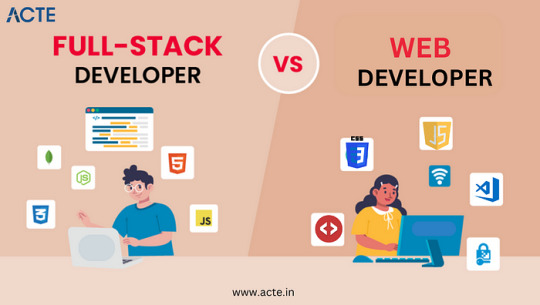#javascript framework
Explore tagged Tumblr posts
Text
Learn Angular JS to build powerful web applications. Enroll at TCCI and gain hands-on skills in one of the top JavaScript frameworks.
#Learn Angular JS#Angular JS Training in Ahmedabad#Web Development Course#JavaScript Framework#TCCI Computer Institute
0 notes
Text
Vue.js: A Progressive JavaScript Framework
In the dynamic world of web development, JavaScript frameworks play a crucial role in building interactive and efficient user interfaces. Among the popular choices, Vue.js stands out for its simplicity, flexibility, and progressive nature. In this article, we will see what is Vue.js what its benefits of it, how to setup Vue.js and how it works with wordpress What is Vue.js? Vue.js is a…
0 notes
Text
In this blog, compare Angular and React to determine the best JavaScript framework for front-end.
0 notes
Text
Vue.js and React.js are two popular frontend frameworks in the developer world, switching top spot on the podium each year in the categories of "most loved, used or popular". Vue.js and React are both great tools for building interactive user interfaces. To choose which one is better for your next project, you have to take a number of factors into account, including your specific use case, your business needs, environment, developer availability, budget, and the timeframe you’re working with. Read more and get more information.
0 notes
Text

If you are preparing to learn Mean Stack Development or are ready to begin your career as a mean stack developer, this article is the right place to begin. The article covers all the information one needs to know before entering the mean stack development. You can collect details like skills-set, education requirements, pay scales, and the future of a developer in the Mean Stack category.
#mean stack developer#mean stack developers#full stack web developer#javascript framework#mean stack developer salary
0 notes
Text
im asking here bc i feel like people here maybe have more experience with this. does anyone know where i could set up a personal blog? i considered tumblr but id like this to be more of a personal experiment rather than tied to a social media site. i dont want to have to pay for a custom domain and dont have enough frontend experience to build something from scratch though,, ;__;
no worries if not, just wanted to ask if anyone has done this! <3
#for ref i can do html/css/bootstrap/backend#angular/typescript esque frameworks and javascript integration big no and idk i want to spend less time customizing more time writing#i already spend too much time coding anyway
56 notes
·
View notes
Text
been bouncing between photography and ui design for my minor and despite loving photography. man i NEED an excuse to take some compsci classes im drowning out here
3 notes
·
View notes
Text

HOW DOES THE CLIENT INITIATE THE PROCESS regarding their construction project?
The client initiates a construction project by defining the project's scope, objectives, and constraints, often through a project initiation document or feasibility study. This includes outlining the project's purpose, parameters, and scope. The client then typically engages with a design team to develop preliminary designs and schematic plans. Once the client approves the design, it's time to release the construction documents and begin the construction phase. They initiate the construction process primarily during the preconstruction phase. A key step involves the release of a Request for Quote (RFQ). This document includes the project design. This sets the groundwork for the build and allows the client to solicit bids from contractors. The client management process becomes more complex for commercial clients with large-scale projects.
As a Project Manager and a Master of Architecture with experience in Project and Design Management in large-scale commercial facilities, multi-story offices, high-rise administration buildings, residential buildings, educational buildings, and industrial buildings, I recognize the significance of efficiently starting a project. When the client begins the process, it usually includes several crucial steps:
Defining the Project Scope: The client should clearly define the objectives, requirements, and constraints of the project. This includes outlining the desired outcomes, budget, timeline, and any specific architectural requirements.
Engaging Stakeholders: The client should identify and engage relevant stakeholders such as end-users, project sponsors, architects, engineers, and other key parties. It's important to understand their needs and expectations from the project.
Selecting the Project Team: The client may be involved in selecting the project team, including architects, designers, engineers, and other professionals. They should ensure that the team has the necessary expertise and experience to deliver the project successfully.
Establishing Communication Channels: The client should set up clear communication channels to facilitate effective collaboration between all project stakeholders. This may involve regular meetings, progress reports, and a centralized platform for sharing project information.
Setting Project Goals and Deliverables: The client needs to work with the project team to establish specific goals, milestones, and deliverables for the project. This includes defining the architectural design requirements, construction phases, and any other project-specific deliverables.
Developing the Project Plan: The client, in collaboration with the project team, should develop a comprehensive project plan that outlines the overall project approach, timeline, budget, and resource allocation.
Risk Assessment and Mitigation: The client should identify potential risks and challenges associated with the project and work with the project team to develop strategies for mitigating these risks.
Legal and Regulatory Compliance: Ensuring that all legal and regulatory requirements are considered and addressed is crucial. This includes obtaining necessary permits, adhering to building codes, and meeting any other legal obligations.
Signing the Project Agreement: Once the initial project parameters are defined, the client and the project team should formalize their agreement through a signed contract or agreement that outlines the scope, responsibilities, and terms of the project.
Effective initial steps build a strong foundation, paving the way for successful project delivery.
•Sonetra KETH (កេត សុនេត្រា) •Architectural Manager, Project Manager, BIM Director •建築師經理, 專案經理, BIM總監 •Giám đốc kiến trúc, Giám đốc dựán, Giám đốc BIM •RMIT University Vietnam + Institute of Technology of Cambodia
#<meta name=“google-adsense-account” content=“ca-pub-9430617320114361”>#Sonetra Keth#blueprint#Inspired Urban Planning#Urban Planning Framework#crossorigin=“anonymous”></script>#កេត សុនេត្រា#នេត្រា#NETRA#netra#n8tra#N8TRA#Affiliate#Earn Commission#Earning#jforce#Jumia#Jumia Force#Marketing#<script async src=“https://pagead2.googlesyndication.com/pagead/js/adsbygoogle.js?client=ca-pub-9430617320114361”#https://drive.google.com/file/d/1eOJDykB9iRlNRQ2Lzssey-_gaAl_gP4r/view?usp=sharing#https://www.infolinks.com/welcome/#:~:text=%3Cscript%20type%3D%22text/javascript%22%3E%20var%20infolinks_pid%20%3D%203429698%3B%20var%20infolinks_wsid%20%3D%200%3B%20%3C/scri#<meta name=“monetag” content=“07e99e76c61091cfc8c3590b90f57e37”>#affiliatemarketing#affiliate links#affiliate program#make money as an affiliate
2 notes
·
View notes
Text
ive been using as many sites/apps thru a browser as i can, with javascript disabled by default for most sites and the sheer amount of sites that dont even render anything at all is disgusting, you broke the basic contract of web development
progressive enhancement
you lil bitch
#void talk#its html first#then add styling with css#then functionality and more styling with javascript#i wonder how many sites load in some fucking framework that duplicates so much browser functionality for what is basically a static site
4 notes
·
View notes
Text
i really need to make my neocities.... i gotta start somewhere..... pain and suffering......
#qrevo.txt#sometimes i get too stuck thinking about like oooo funky javascripts and design choices and whatnot#and i get too caught up in these instead of STARTING THE DAMN THINGGG#when i come home today i'm gonna SNATCH some bootstrap frameworks and straight up MAKE that shitt
4 notes
·
View notes
Text
The plan: Introductory Post
Hello everyone!
I'm mostly writing this post to pin it to my blog page for those who visit.
The heart of this blog is tracking a website I will build from the ground up. This includes the front-end, back-end, UX/UI design, and any other planning/work that pops up.
For some context, around a year ago, I started practicing web development to make it my career. However, things turned out differently than expected. I got another job after having horrendous luck finding work. I really enjoy it, so it snuffed out my drive to find a career in web development.
However, I've always liked web development and programming in general. I've always wanted to use it, but I just didn't have any ideas I wanted to commit to. Now, I have a site that I feel I can turn into a full-fledged application, and I'd like to track it here for those interested and connect with others interested.
I've been on a six-month hiatus, so I'm pretty rusty, but I've decided I want to build the site using Svelte and Supabase. Svelte has always been the framework I wanted to learn, so this website is the perfect excuse. I also have experience with Firebase, but I wanted to challenge myself by learning Supabase. Most of my experience is with React and Next.js. I've used them for volunteer work and for freelancing gigs in the past.
I'll also give a brief summary of my website for common understanding. The MVP will start as a blog, but I plan to expand it to turn it into an informative database (sort of like Wikipedia) and have some interactive elements. I won't get into the meat of the idea, but that's what to expect with my posts. But before that, my posts will mostly be centered around a summary of my learning. Since I'm learning Svelte, my current posts will be based on that.
Thanks for stopping by, and I look forward to hearing your comments or insights moving forward! If you have any questions, feel free to ask!
#programming#coding#developer#web development#tech#website#web design#website development#ui ux design#svelte#supabase#technology#learning#growth#work#organization#habits#time management#potential#connection#framework#javascript#typescript#html#htmlcoding#html5#html css#css#css3#html5 css3
3 notes
·
View notes
Text
NodeJS excels in web development with its event-driven, non-blocking I/O model, making it ideal for handling concurrent connections and real-time applications like chat apps and live streaming. Its single-threaded architecture and use of JavaScript, both on the server and client side, allow for seamless development across the entire stack. NodeJS is especially suitable for startups and projects that require fast, scalable, and high-performance solutions.
Java, on the other hand, is renowned for its robustness, security, and platform independence. It is a mature technology with a vast ecosystem and a wealth of libraries and frameworks, such as Spring and Hibernate, which facilitate the development of large-scale, enterprise-grade applications. Java's multithreading capabilities and strong memory management make it well-suited for complex, resource-intensive applications where stability and reliability are paramount.
Choosing between NodeJS and Java ultimately depends on the specific needs of your project. For real-time, scalable applications with a need for rapid development, NodeJS is a compelling choice. For enterprise-level applications requiring high stability, security, and comprehensive tool support, Java is often the preferred technology.
#nodejs#javascript#web development#framework#best web development company in usa#software#node js development company#javaprogramming#programming
3 notes
·
View notes
Text
Compare React, Vue, and Angular to find the best framework for you. Discover their features, pros, cons, and which one fits for front-end framework.
#angular vs react vs vue#react vs angular vs vue#vue vs react vs angular#vue js vs react vs angular#angular vs vue vs react#JavaScript Framework#front-end framework
0 notes
Text
in a vicious cycle of trying to build a thing with code, getting irritated at it, tabbing over to tumblr and scrolling for five seconds, tabbing back to the code,
#i'm making infoboxes with a framework of someone else's code that i don't understand well enough to customize. so i'm hitting roadblocks#i gotta learn lua... javascript eluded me but lua has a version that's interwoven with mediawiki#and i'm comfortable with mediawiki so. idk maybe there's a chance of me being able to wrap my head around it?#yoshiposts
2 notes
·
View notes
Text
My Perspective on Distinguishing Between Full Stack Developers and Web Developers
I can’t help but go back to my own experience as a web developer as I sit down to write about the difference between full stack developers and web developers. This subject has a special meaning to me since it captures the essence of navigating this fast-paced industry. In order to better appreciate the contrasts between these two jobs, let’s set out on a voyage, and I’ll share my viewpoint and experiences along the way.
We frequently mix the terms “full stack developer” and “web developer” while discussing web development. They stand for several jobs, each with their own set of tasks and abilities. Whether you’re an experienced developer, a newcomer in the industry, or someone pursuing a career in technology, it’s vital to comprehend these contrasts.
Defining Full Stack Developers and Web Developers
Developers who work on the complete stack: Let’s start by defining a full stack developer. In terms of web development, a full stack developer is essentially a jack of all crafts. Both front-end and back-end technologies are familiar to them. This implies that they are capable of managing databases and server-side functionality in addition to designing the user interface. They are essentially the Swiss Army tools of web development.
Web Developers: known as front-end developers — concentrate mostly on the client side of web development. They are masters in using HTML, CSS, and JavaScript to create stunning and engaging user interfaces. Their main objective is to provide a smooth and visually pleasing user experience on a website.

I had a basic comprehension of these jobs when I first started working as a web developer. Like many novices, I mistakenly believed that web programming was solely about producing visually stunning websites. But I quickly understood there was much more to it.
Common Ground: Overlapping Skills
It’s important to acknowledge the areas of overlap between web developers and full stack developers before we get into their distinctions. A solid foundation in front-end development is necessary for both professions. HTML, CSS, and JavaScript proficiency are essential. These languages are your building blocks whether you’re creating a user interface or incorporating sophisticated capabilities.
These front-end abilities were the start of my adventure. I devoted endless hours to polishing my HTML structures, honing my CSS stylesheets, and exploring JavaScript’s potential as an interactive language. These abilities laid the foundation for my profession and are still crucial today.
Delving into Full Stack Development
Let’s now explore full stack development, where the distinctions are more apparent. In addition to being experts in front-end technologies, full stack developers are also knowledgeable in back-end technologies. This covers database management as well as server-side programming languages like Python, Ruby, or Node.js.
Making the switch to back-end development was a turning point for me. Working with databases and server logic first made me feel uneasy. I took the challenge, though, and began studying server-side languages and databases. Even if things weren’t always easy, every challenge I overcame helped me become a better developer.
Web Development: Focusing on the Front End
Web developers, on the other hand, focus on the front end. Their area of expertise is designing captivating, engaging user interfaces. They take great care in website design, making sure that it is aesthetically pleasing, responsive, and user-friendly.
I still clearly recall my first front-end-focused web programming project. Making an interactive and practical design come to life was thrilling. Web developers enjoy the particular high of witnessing a beautifully designed website in use.
Bridging the Gap: The Versatility of Full Stack Developers
The capacity to integrate front-end and back-end development is one of the defining traits of full stack engineers. This adaptability is revolutionary in the tech sector. Full stack developers are able to handle all aspects of development, taking a project from inception to conclusion.
Being a full stack developer has provided me with access to a variety of projects. I’ve had the honor of working on anything from data-driven applications to e-commerce websites. This versatility has improved my skill set and given me the ability to take on a variety of difficulties.
My Personal Journey
I can’t help but thank the mentors, classes, and resources that have molded my perspective as I consider my career as a developer. Participating in coding groups, taking full stack developer courses provided by ACTE Institute, and learning from seasoned developers have all been extremely beneficial to my development.

Realizing that no one becomes a full stack developer or web developer over night is essential. It is a path of ongoing learning and development. And keep in mind that each person’s journey is distinctive, formed by their experiences and decisions.
The Ever-Changing Tech Landscape
The only thing that is consistent in the tech sector is change. Both web developers and full stack developers need to keep up with the latest trends and technology. Adaptability is essential, from the emergence of new programming languages to the development of front-end frameworks.
I’ve seen firsthand how quickly tools and techniques for web development have advanced. In this always changing sector, adapting to change and remaining curious have been essential.
In conclusion, anyone navigating the IT sector needs to be aware of the differences between full stack engineers and web developers. Each role has its own advantages and difficulties. Remember that your path as a developer is an ongoing discovery whether you decide to focus on one or embrace the variety of the other.
#full stack developer#web development#full stack web development#frameworks#education#information#technology#front end development#back end#javascript
2 notes
·
View notes